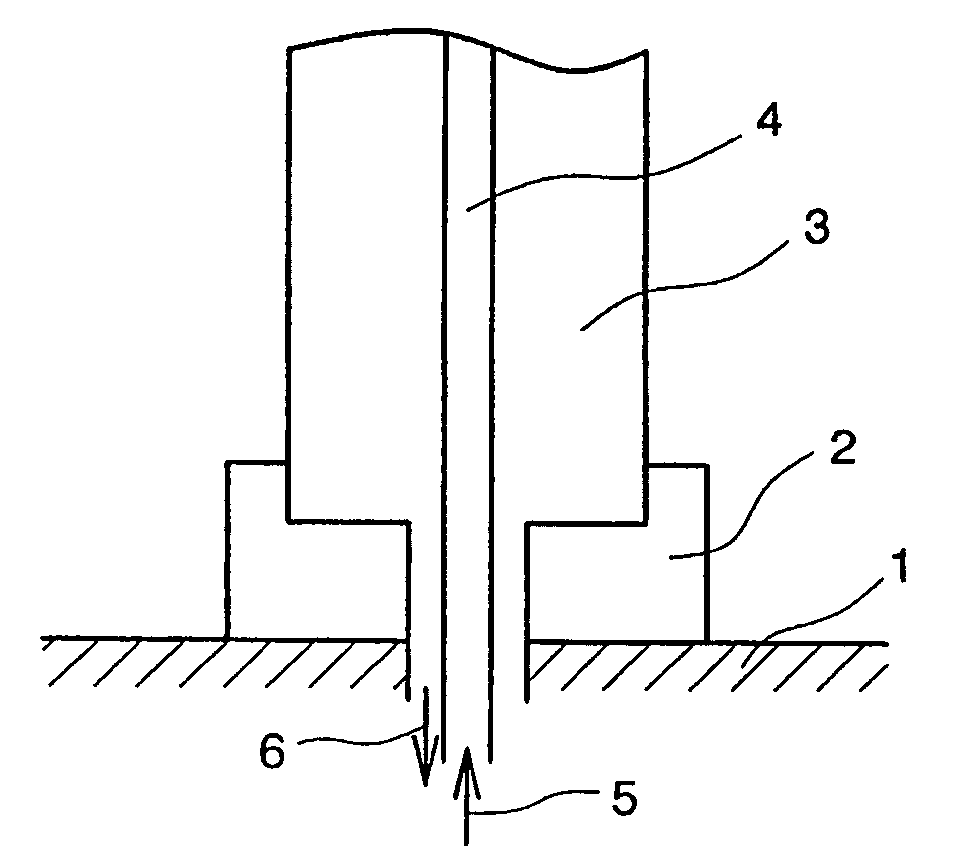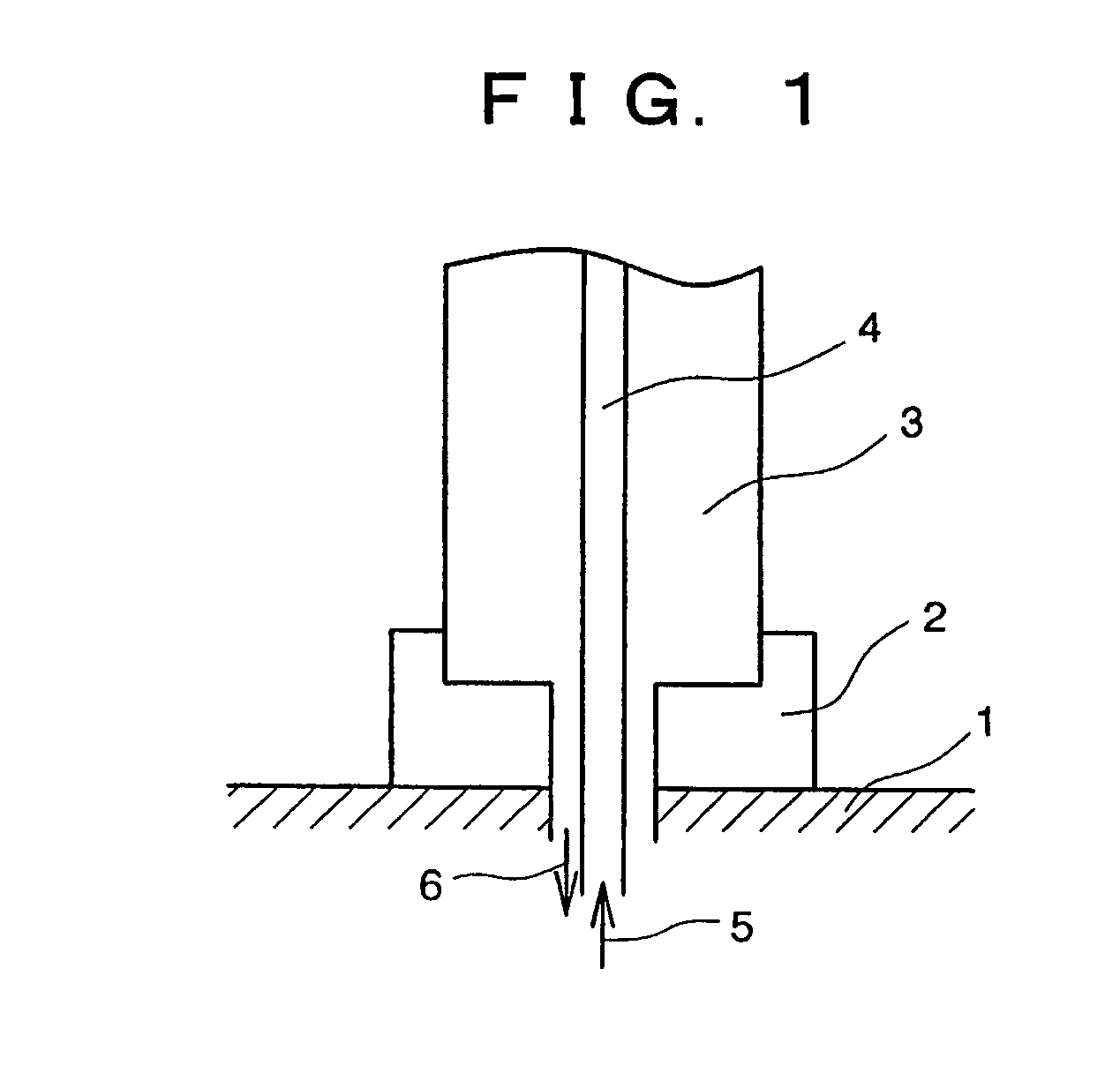Method for manufacturing polycrystalline silicon, and polycrystalline silicon for solar cells manufactured by the method
a manufacturing method and technology for solar cells, applied in the direction of silicon compounds, sustainable manufacturing/processing, final product manufacturing, etc., can solve the problems of slow deposition rate, method has not been adapted for practical use, and the surface area available for deposition in the initial stage of the reaction is easy to be heated, and the product silicon can be taken out in the initial stage of the reaction. , the effect of reducing the takeout tim
- Summary
- Abstract
- Description
- Claims
- Application Information
AI Technical Summary
Benefits of technology
Problems solved by technology
Method used
Image
Examples
example 1
[0081]A hollow tube having an outer diameter of 9 mm and a height of 300 mm was prepared by subjecting, to a rounding work, a plate material of a lanthanum-added molybdenum alloy doped with lanthanum (La) of 0.1 mm thickness (trade name TEM Material: product by Allied Materials Co.). This was set in a gate form in a quartz glass bell jar (inner diameter 120 mm, height 500 mm), and was heated by passing electric current through. The method used for setting this in a gate form was as follows: namely, the upper end of each of the vertical tubes was cut into a V notch, and a horizontal pipe was mounted on top thereof. After the temperature of the core surface had reached 1180° C. as measured by an optical pyrometer, hydrogen gas after bubbling through a trichlorosilane liquid (temperature 25° C.) was supplied at 0.6 ml / minute, the hydrogen gas introduced directly into the reactor was supplied at 10.8 ml / minute, and hydrogen gas for reactor window use supplied to the inside surface of th...
example 2
[0083]The reaction was performed in the same manner as in Example 1 using a TEM tube of the same dimensions as in Example 1. The TEM tube was heated for 10 hours at 1800° C. (in a hydrogen atmosphere) prior to the reaction, thus performing a treatment to prevent embrittlement. When the reaction was terminated after 8 hours lapse of time, and the diameter was measured, the diameter had grown to 16.2 mm. No heating means from outside was undertaken.
[0084]The block thus produced was subjected to the same treatment as in Example 1, and the conduction type, resistivity and lifetime of this block were measured. The results are shown in Table 1.
example 3
[0085]The reaction was performed in the same manner as in Example 1, except for the fact that the TEM tube used in Example 2 was reused. When the reaction was terminated after 8 hours lapse of time, and the diameter was measured, the diameter had grown to 16.1 mm. No heating means from outside was undertaken.
[0086]The block thus produced was subjected to the same treatment as Example 1, and the conduction type, resistivity and lifetime of this block were measured. The results are shown in Table 1. Furthermore, the amounts of Mo and La in the Si block following the reaction were determined. Both of these contents were not exceeding 1 ppb.
PUM
| Property | Measurement | Unit |
|---|---|---|
| temperature | aaaaa | aaaaa |
| thickness | aaaaa | aaaaa |
| diameter | aaaaa | aaaaa |
Abstract
Description
Claims
Application Information
 Login to View More
Login to View More - R&D
- Intellectual Property
- Life Sciences
- Materials
- Tech Scout
- Unparalleled Data Quality
- Higher Quality Content
- 60% Fewer Hallucinations
Browse by: Latest US Patents, China's latest patents, Technical Efficacy Thesaurus, Application Domain, Technology Topic, Popular Technical Reports.
© 2025 PatSnap. All rights reserved.Legal|Privacy policy|Modern Slavery Act Transparency Statement|Sitemap|About US| Contact US: help@patsnap.com



